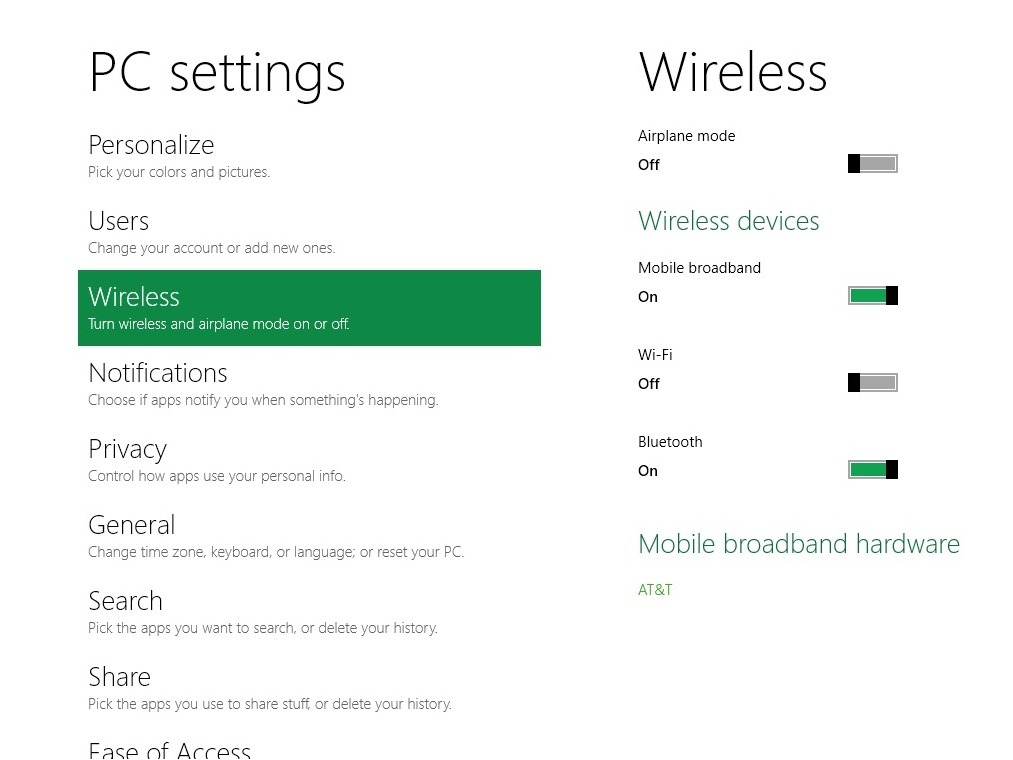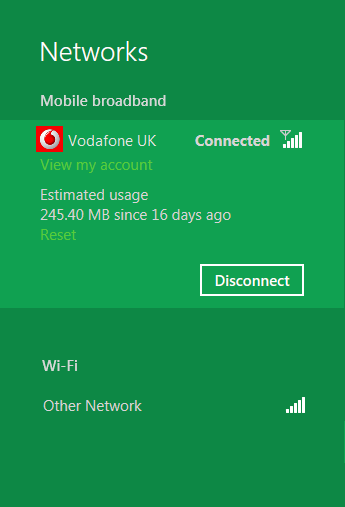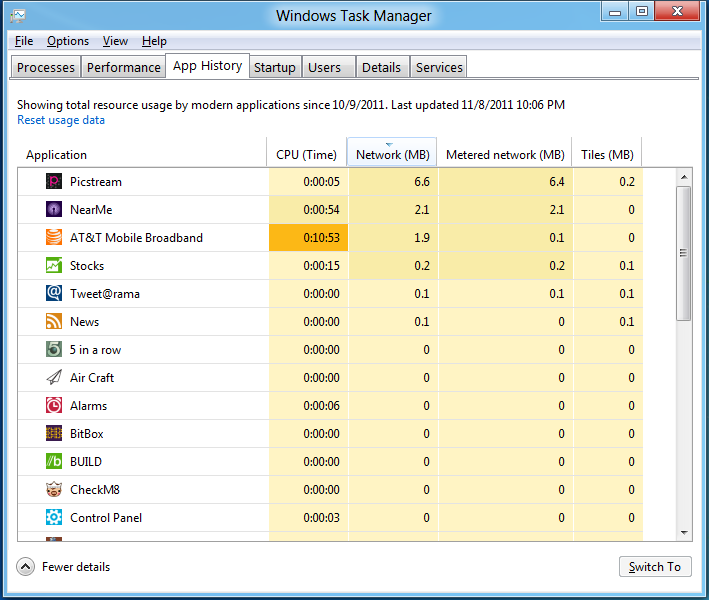Windows 8's New Ways to Manage Wireless, Bandwidth
Windows 8 will be a new animal that merges mobile design thinking with that of the traditional PC computing. The clear sign of this is the Metro design that's currently being used in Windows Phone – and to a smaller extent in the latest Xbox 360 dashboard.
The latest Windows 8 innovation shared through the B8 blog is about how the next big Microsoft release will handle wireless connectivity via Wi-Fi and mobile broadband. Specifically, Windows 8 will attempt to make connectivity as easy and as seamless as possible.
While Wi-Fi options are built into current versions of Windows natively, Windows 8 will attempt to integrate mobile broadband functionality into the OS without having to resort to specialized applications from the hardware provider.
Billy Anders, a group program manager on Microsoft's devices and networking team, explained, "We wanted to eliminate the guesswork in locating and installing device drivers for mobile broadband. We did this by working with our mobile operator and mobile broadband hardware partners across the industry, designing a hardware specification that device makers can incorporate into their device hardware. In Windows 8, we developed an in-box mobile broadband class driver that works with all of these devices and eliminates your need for additional device driver software. You just plug in the device and connect. The driver stays up to date via Windows Update, ensuring you have a reliable mobile broadband experience."
The integration of mobile broadband and Wi-Fi also means that Windows 8 will be smart enough to disable the mobile connection when a remembered Wi-Fi network is in range.
Microsoft also realizes that some users have to deal with data caps – particularly for those on mobile broadband – and will restrict the data usage accordingly. For example, while on mobile broadband Windows Update will not download non-critical updates in the background and can choose to display lower quality images to conserve bandwidth.
"We also want Windows applications to behave well on metered networks, so we’ve provided a new set of developer APIs within the ConnectionCost class of the Windows.Networking.Connectivity namespace," explained Anders. "If you are an application developer, we encourage you to leverage these APIs and adapt the behavior of your app, such as allowing a low-definition vs. high-definition video stream, or a header-only vs. full-sync of email, depending on the network type. We believe that this adaptive behavior is critical, as it results in actual cost savings for end users. All Metro style apps in the Windows Store must implement these APIs if they use the network."
Get Tom's Hardware's best news and in-depth reviews, straight to your inbox.
Of course, users can also monitor their usage themselves as built into the display options is a bandwidth meter. Windows Task Manager itself can even break this down with more granularity, as seen in the image below.
-
AndrewMD This may be one of the best Windows release and a big leap forward from when Windows 95 hit the scene so long ago.Reply
Look forward to the release of this OS. -
Blues_wolf I don't know, I might wait for Windows 9. Microsoft has that weird cycle when they launch a buggy OS to test new things (95, Me, Vista) and a more stable OS with the things that worked (98, XP, 7)Reply -
freggo The WIFI aspect reads well; let's hope the actual integration works as advertised.Reply
Still, I can not help but shudder at the GUI. Those square boxed will not find a home on my desktop.
It just looks plain ugly.
-
blingbling friskiestThis bandwidth saving feature of Windows 8 will be a boon to mobile users,.OK So, I didn't know what 'boon' meant. Now that I know its a thumbs up for you.Reply -
andywork78 wow software really can change does...Reply
I though hardware change is best way to get better wireless... -
stingray71 Impressive, wasn't giving W8 much thought until now. If this much thought/work went into wifi/broadband connectivity, I can only imagine what the rest of OS looks like.Reply
With 4G becoming more popular, I can see a lot more folks going with 4g dongle for their mobile internet. This will be very useful.



